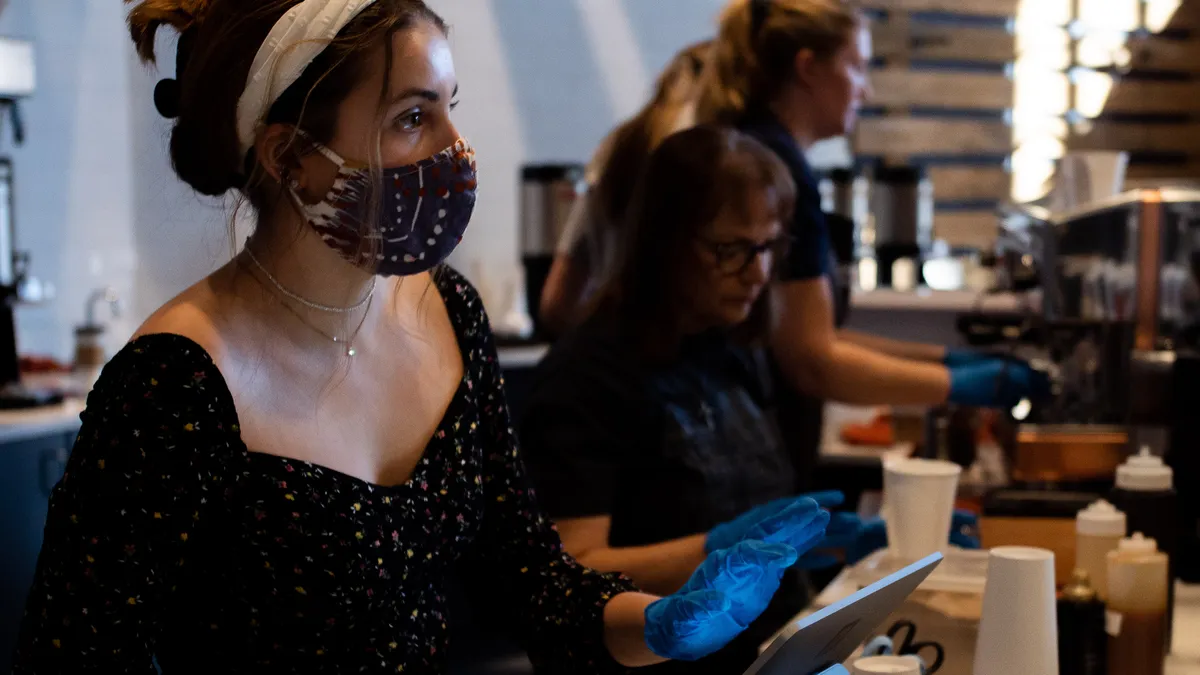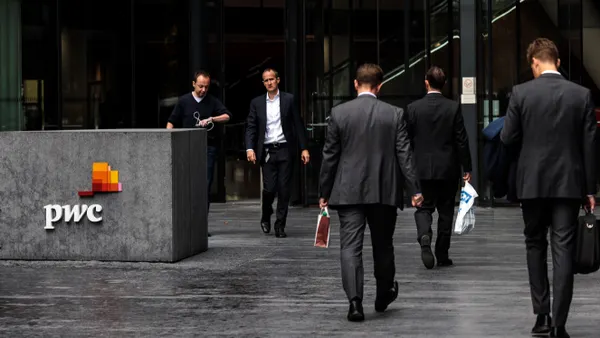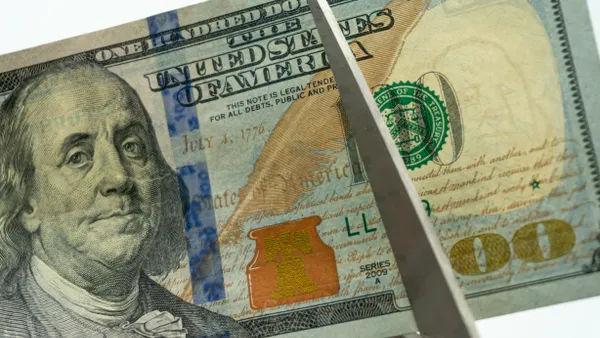Dive Brief:
- A business with a previous lending relationship enjoyed a 57% greater chance of obtaining a Paycheck Protection Program (PPP) loan, with 75% of "relationship-borrowers" gaining a loan compared with only 18% of "non-relationship firms" doing so, according to a study by researchers at Washington University in St. Louis, Boston College and the University of Geneva.
-
A personal connection between the lender and top management of the borrower — such as shared education, prior employment or ties to nonprofits — increased the likelihood of obtaining a loan amid the COVID-19 pandemic by more than 7%, according to the study of PPP borrowing by publicly traded companies.
- "Not only does our research provide unequivocal evidence of favoritism in bank lending during the initial round of PPP funding, it also suggests that banks deviated from the stated objectives of the program for their connected borrowers," Xiumin Martin, professor of accounting at Washington University's Olin Business School, said in a statement.
Dive Insight:
Congress in late December approved $284 billion for the PPP in a coronavirus aid bill, adding to $525 billion in forgivable loans provided to small businesses in PPP lending last year.
The Small Business Administration (SBA) drew fire when Shake Shack, the Los Angeles Lakers, Ruth's Chris Steakhouse and other large organizations obtained PPP funds in 2020 before smaller borrowers. Many loan recipients ended up having second thoughts and returned their loans.
Bank favoritism creates "allocative distortions that force connected firms to return their loans," the researchers said, adding that stricter monitoring weakened the impact of borrowers' connections to banks.
Last year 27% of the PPP loan total went to low- and moderate-income communities, according to the SBA. More than $133 billion in program loans went to small businesses in historically underutilized business zones (HUBZones), while small businesses in rural areas received $80 billion.
In the current round of lending, the SBA as of Feb. 10 approved PPP loans totaling $104 billion to 1.3 million small businesses while trying to ensure greater access to underserved businesses, the agency said in a press release.
Businesses in rural areas have received 28% of funding, while businesses requesting less than $100,000 have received 82% of loans, the SBA said.
"We are committed to taking additional steps to ensure that there is equitable access for underserved businesses," Michael Roth, senior advisor to the SBA Administrator, said in a statement.
In their study of PPP aid last year, researchers found that businesses with past lending relationships were 24% more likely to return their loans than borrowers lacking such connections, while borrowers with personal connections were 10% more likely to return their loans.
"This evidence suggests that banks deviated from the stated objectives of the PPP program by favoring their connected borrowers," according to the researchers.
Oversight tightened after Congress approved extra PPP funding in April, potentially reducing bank favoritism, the researchers said.
"Our research shows that banks exploited the allocation of PPP loans to strengthen their business relationships with large connected firms amid the COVID-19 crisis," Martin said. "That, coupled with the origination fees that banks collected, and their lack of exposure to credit risk, amounted to a net transfer from taxpayers to banks."
Early last year businesses shut down as the coronavirus spread and, by April, unemployment surged to 14.7%, the highest rate since the start of such recording keeping in 1948, according to the U.S. Bureau of Labor Statistics.
PPP lending cushioned the blow from COVID-19, helping 5.2 million small businesses maintain employment for 51 million U.S. workers, according to the SBA. Unemployment in January remained high at 6.3%.
Under a $1.9 trillion coronavirus relief package proposed by President Biden, the government would provide more than $15 billion in grants to more than 1 million small businesses. The so-called American Rescue Plan would also leverage $35 billion in government funds into $175 billion in small business loans and investment.















